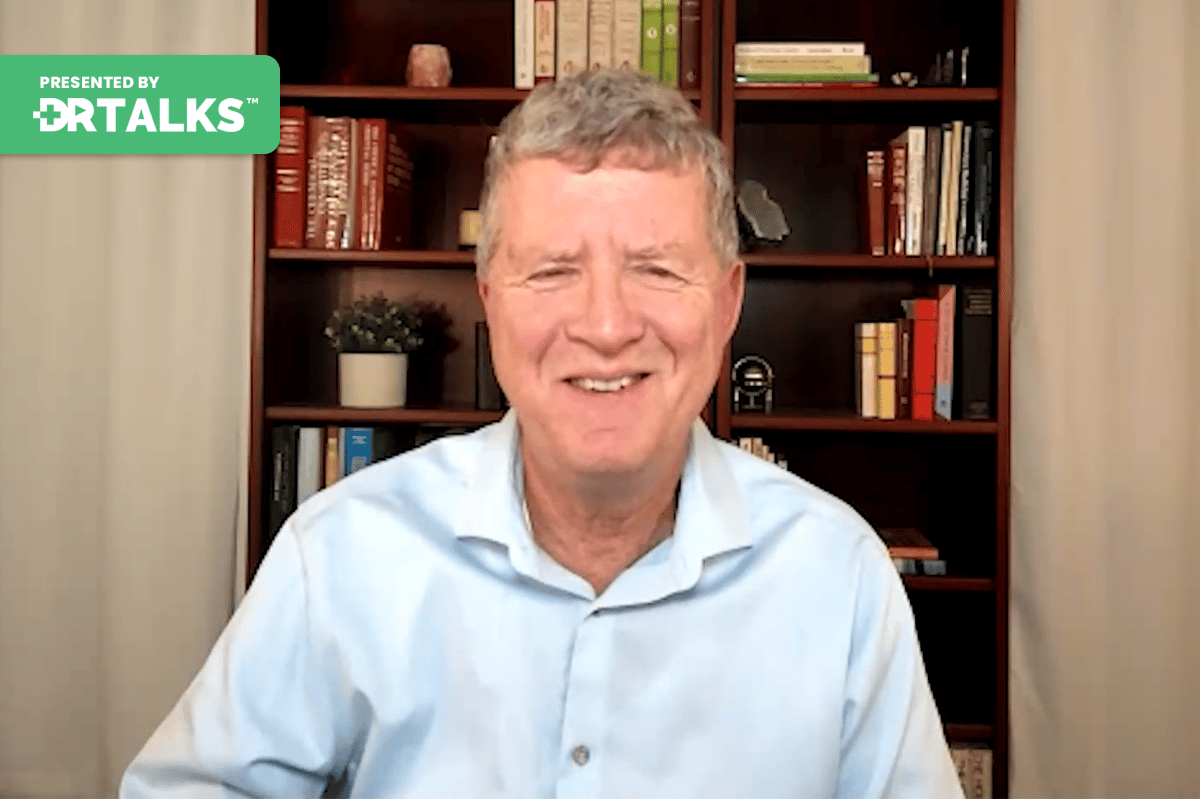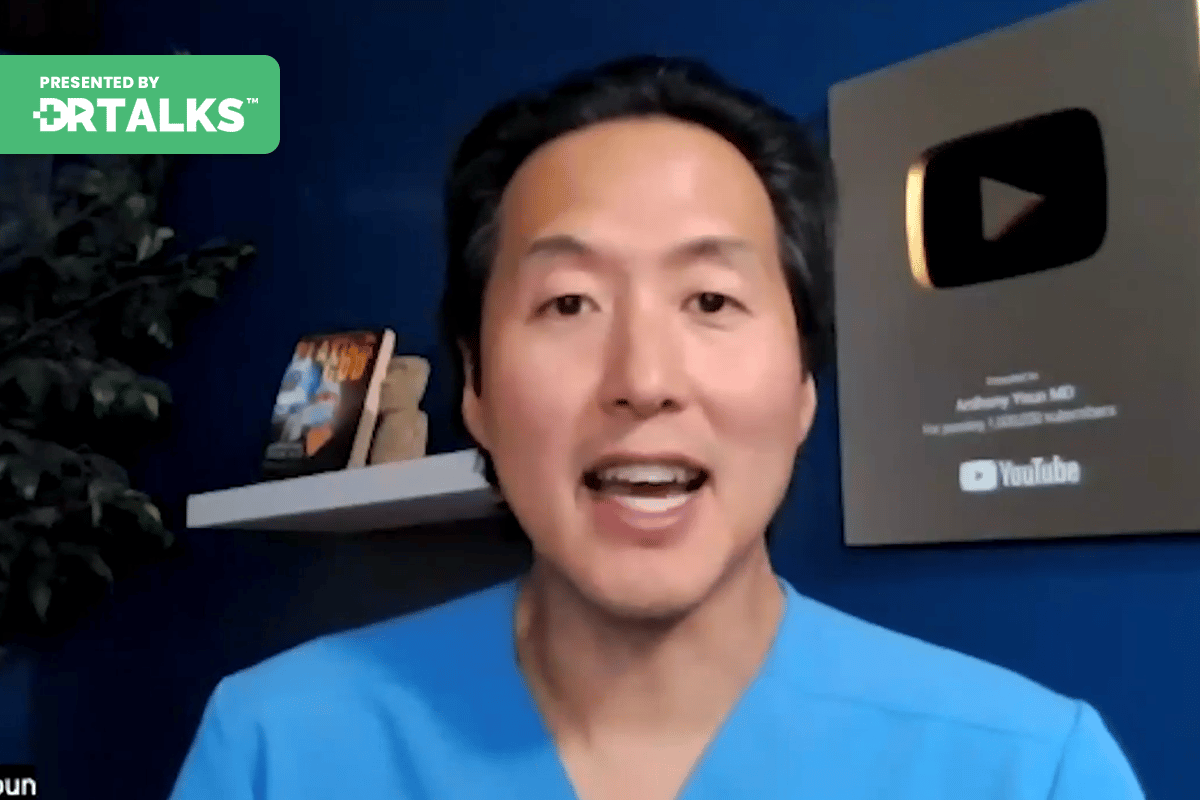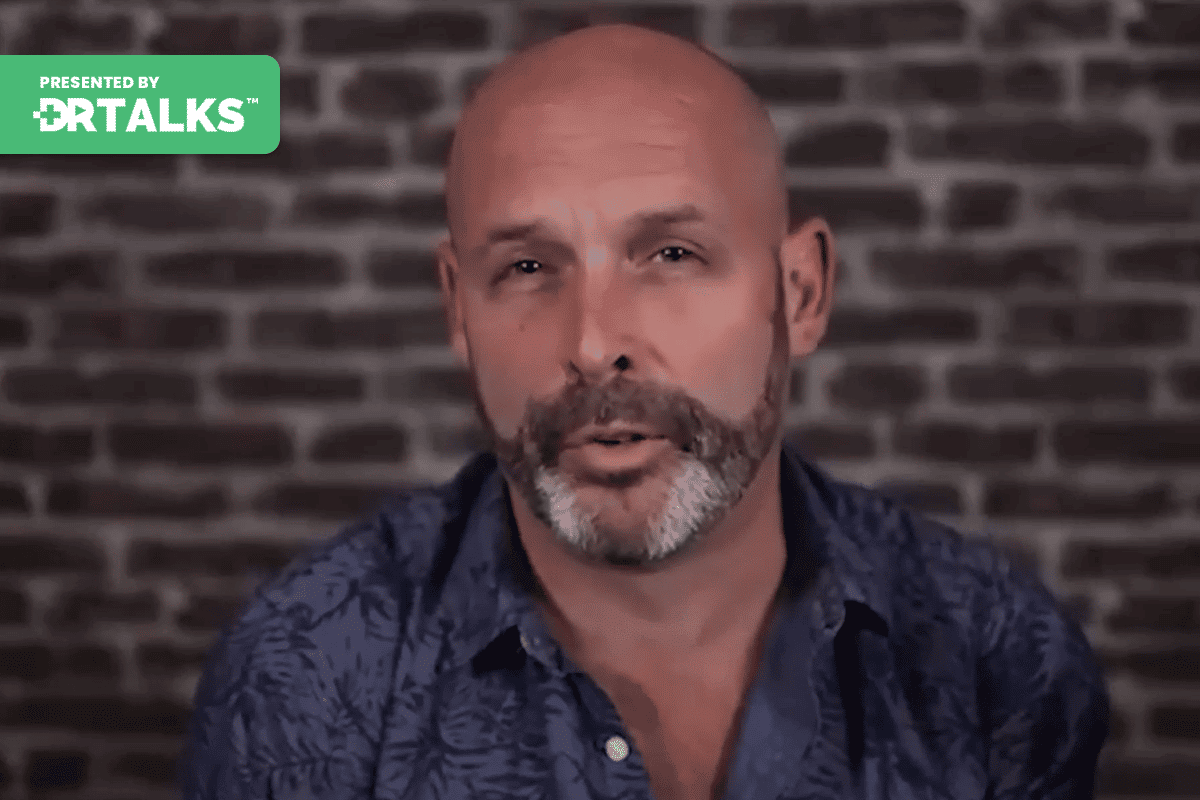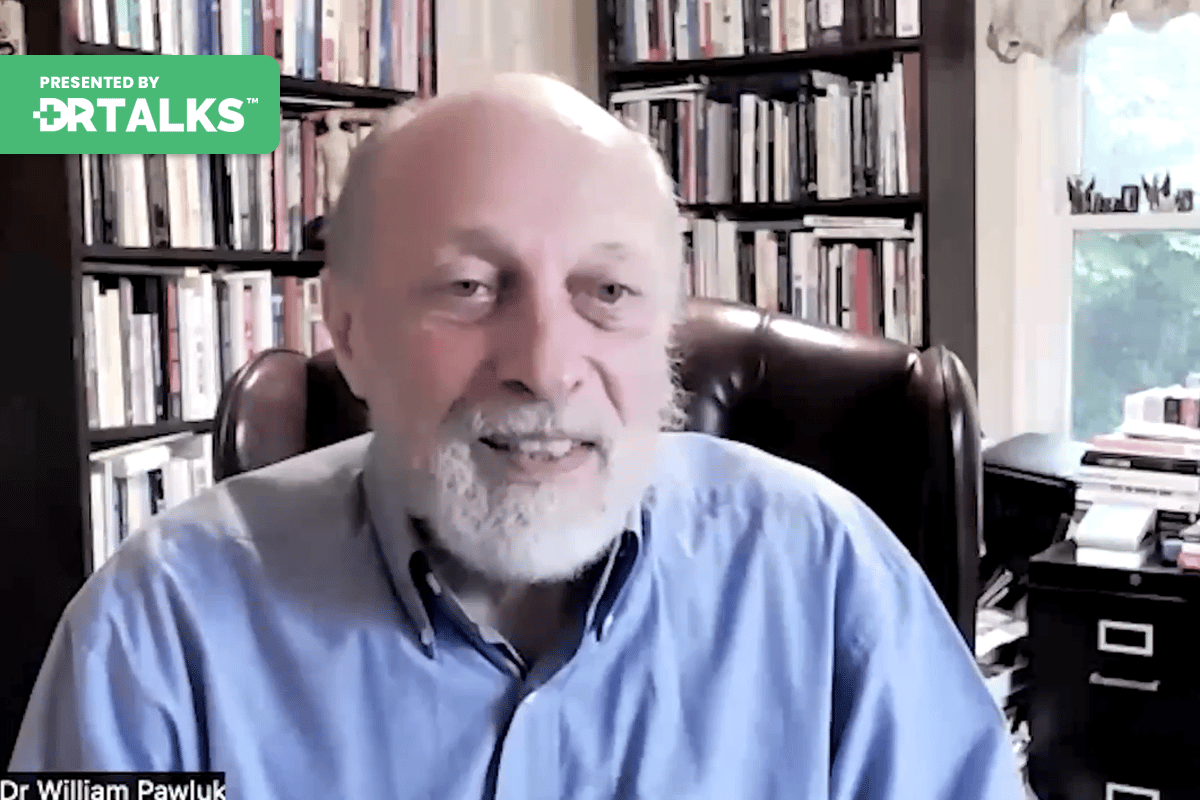Join the discussion below
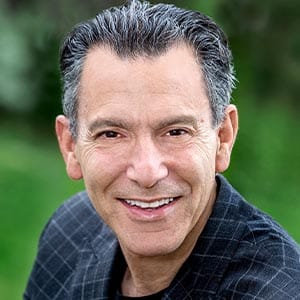
Joel Kahn, MD, FACC of Detroit, Michigan, is a practicing cardiologist, and a Clinical Professor of Medicine at Wayne State University School of Medicine. He graduated Summa Cum Laude from the University of Michigan Medical School. Known as “America’s Healthy Heart Doc”. Dr. Kahn has triple board certification in Internal... Read More
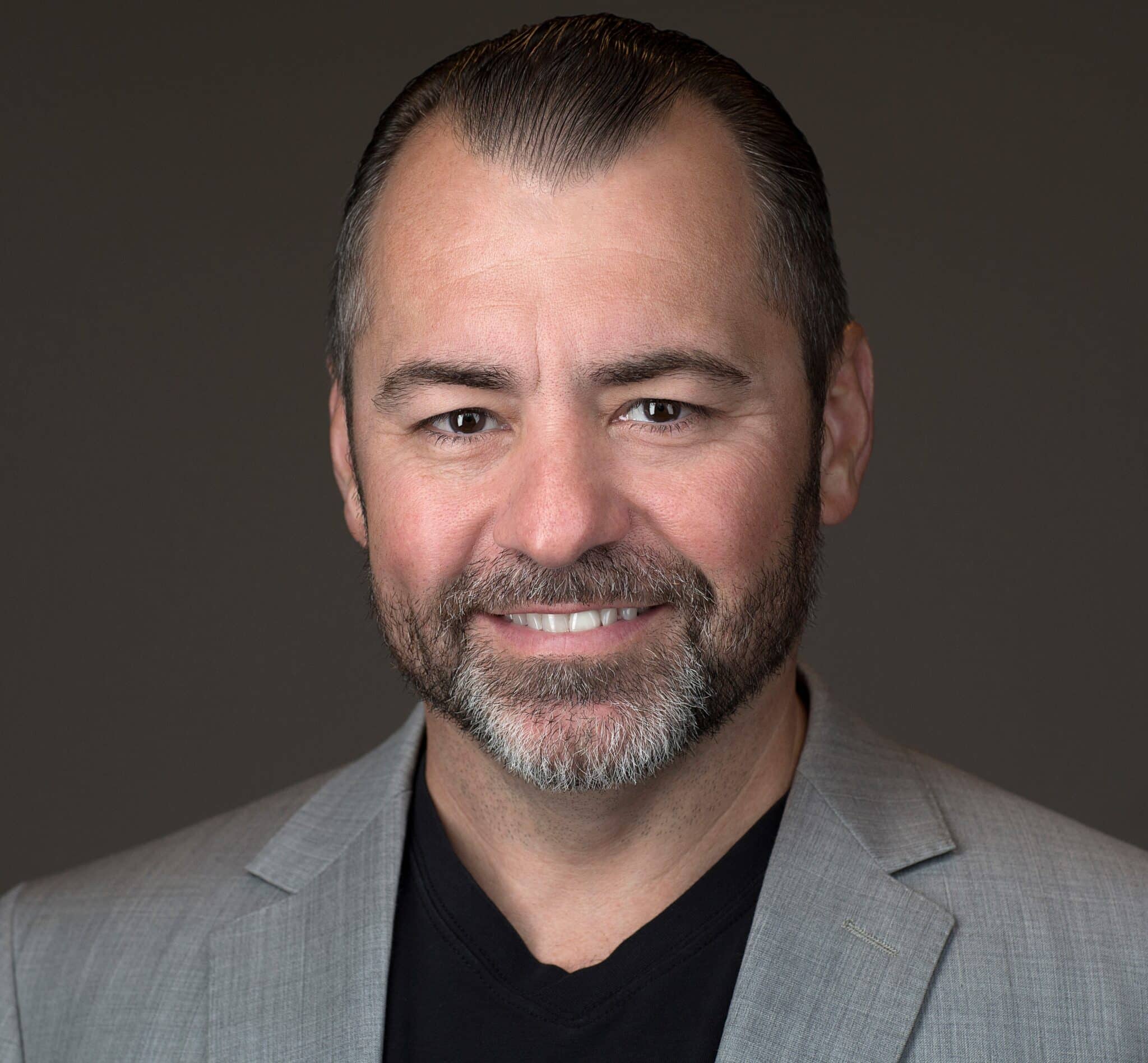
Dr. Nathan Bryan is an international leader in molecular medicine and nitric oxide biochemistry. Specifically, Dr. Bryan was the first to describe nitrite and nitrate as indispensable nutrients required for optimal cardiovascular health. He was the first to demonstrate and discover an endocrine function of nitric oxide via the formation... Read More
- Nitric oxide is the “miracle molecule” that drove a Nobel Prize in Medicine award and is responsible for optimal heart and total body health
- Nitric oxide production can be enhanced by healthy lifestyles and optimal nutrition
- The role of the production of nitric oxide in beginning in the mouth by eating, chewing slowly, and supplementing with dietary nitrates has made it easier to support optimal nitric oxide levels
Joel Kahn, MD, FACC
Good morning Dr. Bryan, how are you sir?
Nathan S. Bryan, PhD
Dr. Kahn, I’m great. Good to be with you.
Joel Kahn, MD, FACC
Thank you. Welcome to the “Reverse Heart Disease Naturally Summit.” Something that we think will give good, practical, but very science-based information and couldn’t be more excited than to talk to an authentic scientist of great renown. As you know, I get patients that will ask me, “What does Dr. Bryan say about what you’re doing with my supplements or my program?” Because I reached out to you a couple weeks ago specifically for that reason. And for those that don’t know you, I’ll give them the 30 seconds. Born and raised I just learned in Bryan, Texas, just like your last name, Nathan Bryan. Earned a PhD in Shreveport, Louisiana, after other schooling in Texas. Probably one of the major notes is you went to the lab of one of the Nobel Prize laureates we’ll talk about in a minute Ferid Murad, who is certainly a legend in biochemistry of keeping your heart healthy, cardiovascular disease what we’re talking about for everybody listening. And then you’ve really had a distinguished career, written many books, many papers, but you’re a businessman too which is a good thing. And you’re an entrepreneur who started many companies ’cause you’re looking for solutions. And let’s talk about the problem and the molecule and let’s talk about some of your prior solutions and your current solutions. So thanks again for joining us. I know your time is valuable. You’re about to zoom off to another place to educate and heal the world. Tell us, I mean, there could be somebody here that has never heard of a simple molecule, probably the most famous and most important molecule in the body nitric oxide, NO. Tell us a little bit maybe where you ran into that at Dr. Murad’s lab and just give us a few minutes on what it is and what it does.
Nathan S. Bryan, PhD
Sure, it’s a relatively new discovery in the medical and scientific literature. It was only discovered about 40 years ago, but I got interested in nitric oxide when I was a student at LSU School of Medicine working on my PhD. And the Nobel Prize had just been awarded for its discovery so we knew it was an extremely important molecule in human physiology, but at that time we didn’t really know how the human body made it, what goes wrong in people that can’t make it, what are the clinical consequences, and then how do you fix it? So it’s a signaling molecule. It’s how cells in the body communicate with one another.
It’s most widely known as its role as a vasodilator, meaning that when it’s produced in the lining of the blood vessel, opens up the blood vessel and improves oxygen and nutrient delivery. So as you know as a cardiologist, if you don’t get enough blood supply and oxygen to the heart or any organ for that matter, then that organ doesn’t do very well and develop an organ disease and people die from this. So now it’s recognized that the loss of nitric oxide is the earliest event in the onset progression of cardiovascular. So as you said, it is the most important molecule produced, because you can’t deliver oxygen, you can’t deliver oxygen and nutrients and blood supply to every organ tissue, and cell in the body without nitric oxide.
Joel Kahn, MD, FACC
All right, so I mean, just to break that down, NO nitric oxide, one nitrogen, one oxygen. You probably know, I don’t know how. How are they bound together?
Nathan S. Bryan, PhD
Well, it’s a covalent bond. It’s a free radical. So it’s an unstable molecule. So when it’s produced in the body, it’s gone in less than one second. So it’s like this burst of gas that then starts this whole signaling cascade and then it’s gone. And I think that’s been the challenge in medicine over the past 30 or 40 years is how do you make a nitric oxide based therapy, a solid dose of a gas? And that’s kind of how I cracked the code and kind of what I’m known for in my discovery is we were the first in the world to make a solid dose of a nitric oxide gas.
Joel Kahn, MD, FACC
All right, and just to break down a little more of what you said in that eloquent intro, to signaling molecule, major function is to relax arteries to improve blood flow everywhere. And think of brain health, think of cardiovascular health, think of sexual health, think of gastrointestinal health. Everybody listening to this would probably want to maintain their healthy production of nitric oxide throughout their life. And then you threw at us ’cause a lot of the audience doesn’t know this that three labs around the world were racing to understand, discover, and characterize what the signaling molecule was that resulted in those three labs and those three lead scientists getting the Nobel Prize in Medicine 1998, 25 years ago and of course you were lucky to get to work with one of those three recipients, 1998. I think it was 1992, one of the premier journals in the world of science called this molecule ‘The Miracle Molecule.’ And I think that probably still is deserving. So for people that wanna say, “Well, it sounds like we should have a lot of nitric oxide, I want that good blood flow.” Tell us about how blood vessels make it ’cause you’re gonna tell us that there’s more than one way to produce NO.
Nathan S. Bryan, PhD
That’s right. So just like what you’re doing now, moderate physical exercise stimulates the production of nitric oxide. So when we begin to exercise that causes sheer stress in the lining of the blood vessel. And that tells those blood vessels, hey, I need to make more nitric oxide ’cause I need to widen that blood vessel to meet the increased metabolic demands on that particular skeletal muscle or the heart muscle. And so that stimulates nitric oxide through an enzyme called nitric oxide synthase. And that’s the enzyme that becomes dysfunctional with age. So the older we get, the less nitric oxide we make through that enzyme. And it’s really complex enzymology and biochemistry, but it uncouples and then it becomes a super oxide or an oxygen radical producing enzyme.
So we figured out years ago how to recouple that nitric oxide synthase enzyme so that now when you do exercise or you do nasal breathing, we can activate nitric oxide production, but the other way is through diet. It’s the mechanism and the explanation for a plant-based diet. So we’ve discovered that inorganic nitrate that’s found primarily in green leaf vegetables, can be metabolized by the bacteria that live in and on our body. And then they produce nitric oxide. So that pathway can compensate for loss of endothelial production of nitric oxide. And so when you lose the ability to generate nitric oxide through both pathways, that’s when you start to get clinical symptoms of an elevation in blood pressure, you develop sexual dysfunction, mild cognitive disorders which if not corrected, will develop into Alzheimer’s. It’s involved in insulin signaling. You need nitric oxide for insulin signaling. So if you can’t make nitric oxide, you develop metabolic syndrome, type two diabetes. So a number of clinical manifestations occur if you can’t make nitric oxide.
Joel Kahn, MD, FACC
So again, just anybody taking notes, right down number one, your arteries make nitric oxide, but you lose some of that production with age because an enzyme, NOS3 starts to become less and less competent. And that’s under genetic control too. We don’t all have the exact same efficiency of our nitric oxide synthase. That correct?
Nathan S. Bryan, PhD
That is correct. So there’s two primarily what’s called single nucleotide polymorphisms for genetic SNPs. One is in the NOS enzymes. So if there’s a disruption in the coating of that protein, then it’s not functional. And the other is more common which is the MTHFR, which is methylenetetrahydrofolate reductase enzymes. So that SNP which I think the literature reveals probably 45 to 50% of the people in the US have maybe a single or a double copy of that SNP and then that enzyme is responsible for making tetrahydrobiop which is another important molecule or substrate for nitric oxide. So MTHFR patients are typically nitric oxide.
Joel Kahn, MD, FACC
So before we shift to the second way we make nitric oxide diet of which you’re an expert and of which I’ll encourage everybody to take a look at a book you’ve written in a moment. Well you mentioned, I’m on a treadmill desk, I’m getting rather light exercise because we’re talking and I’m working. I certainly encourage everybody to do moderate to sometimes vigor exercise, but how do we protect arterial production in nitric oxide? Is separate from dietary nitrates we’ll get to. Does eating the white rind of a watermelon to get more citrulline help? Does taking five grams of L-arginine powder like I learned in cardiology fellowship ’cause the Mayo Clinic was doing it at the time for coronary vasospasm. I mean, at arterial level, of course don’t smoke, monitor your diet, but I mean healthy endothelium, healthy lining is one way to protect your nitric oxide production at the arterial endothelial level.
Nathan S. Bryan, PhD
That’s right. So we have to promote conditions that prevent oxidative stress, that oxidize those substrates and molecules that are required to make nitric oxide. So L-citrulline is a byproduct of nitric oxide production, and L-arginine is what’s called a semi essential amino acid, meaning that we get it from the breakdown of proteins in our diet and it’s also produced through the urea cycle. So we’re never limiting the amount of L-arginine that our body has to make nitric oxide. So the problem is, that the body’s just lost its ability to convert arginine to nitric oxide. So supplementing with more arginine or citrulline never made sense to me biochemically because we already have enough in our body, even in the sickest of patients to theoretically saturate the binding sites of the enzyme.
Joel Kahn, MD, FACC
And there is that one article that scares cardiologists and people who’ve had a prior heart attack, supplementing with L-arginine may actually have a negative effect. So I’ve been cautious about that particularly in that group of patients, excellent. So then you’ve just told us the Nobel Prize was awarded mainly for that L-arginine and nitric oxide synthase pathways at the endothelial level, right?
Nathan S. Bryan, PhD
That’s correct.
Joel Kahn, MD, FACC
Well, when did we learn that chewing leafy greens and you’ll tell us about that right now and I will say, Dr. Bryan has an excellent book that really supports the role of eating lots and lots of brightly colored green leafy vegetables and beets and other sources. And it’s just a great read. “Functional Nitric Oxide Nutrition” so pick that up. We have a bunch of copies in my office, patients love it. But tell us, when did we learn about that pathway?
Nathan S. Bryan, PhD
Well, the science was clear even back in the early 90s, but kind of the pieces of the puzzle weren’t put together until really around 2010, 2012.
Joel Kahn, MD, FACC
So recently, not long ago?
Nathan S. Bryan, PhD
Not long ago at all. And so really in the 2012 Olympic games is when it really became popular because it was recognized that a lot of these athletes were drinking a lot of beetroot juice to improve their performance. So at that time there were a number of clinical studies showing that the inorganic nitrate found in green leafy vegetables and some root vegetables, could be metabolized into nitric oxide through the bacteria. So what happens is when we eat a plate of spinach or kale or any dark green vegetable, 90 minutes after we consume that particular vegetable, a single molecule called nitrate, which is NO3- is taken up in the gut and concentrated in our salivary glands. So now for the next eight, 10, 12 hours, each time we salivate, we’re secreting this nitrate.
And then the bacteria that live on the clips of the tongue, use this as a substrate for respiration. So they then reduce the nitrate into nitride and nitric oxygen. So now every time we swallow our saliva for the next eight, 10, 12 hours, we’re getting a burst of nitric oxide in the lumen of the stomach. And then that nitric oxide actually acts as a hormone and then goes systemic and elicits a lot of physiological responses that can lower blood pressure, that can improve exercise performance. But the challenge is and this is where people get into trouble, when you disrupt the oral microbiome, for example, if you’re using mouthwash, we and others have published that people who use mouthwash disrupt nitric oxide production and blood pressure goes up and they lose the protective benefits of .
So that’s the first step that gets disrupted. And the other, is people on antacid. You need stomach acid in order to convert that salivary nitrate into nitric oxide. And if you can’t make stomach acid, you can’t make nitric oxide. And really the big problem were these class of drugs called proton-pump inhibitor ’cause not only do they suppress the nitric oxide coming from our dietary pathway, but they lead to an increase in an inhibitor of nitric oxide called ADMA or asymmetric dimethylarginine. So PPIs completely shut down nitric oxide production through both pathways and can lead to a number of problems. And you’re probably familiar with this. I think it was in 2015 or 2016, it was a large database that was mined by Dr. John Cooke, another famous cardiologist in Stanford.
Joel Kahn, MD, FACC
Right, Stanford.
Nathan S. Bryan, PhD
And revealed that people who have been on PPIs for three to five years had about a 35% higher incidence of heart attack and stroke. So this isn’t a trivial problem. You have to get people off mouthwash. And you have to get people off of antacids, specifically the PPIs.
Joel Kahn, MD, FACC
Yeah, and you said so much of value. And again, so we’re gonna eat our leafy greens, we’re gonna eat our beets, we’re gonna chew them. We have an amazing system involving a parotid gland to produce ultimately more miracle molecule nitric oxide, but we can mess that up with antiseptic, antibiotic mouth washes that kill bacteria in the grooves of our tongue and we can mess it up by taking PPIs, Prilosec and pantoprazole, Nexium and the rest. What about a little different drug is famotidine, Pepcid, Pepcid AC. Do you know if it has the same detrimental impact? Because it seems safer for the cardiovascular system and I try and get people out of PPIs and if I have to that’s where I have them land with a histamine blocker, famotidine.
Nathan S. Bryan, PhD
It’s not as damaging because it doesn’t lead to the increase in ADMA. Those seem to be specific to PPI.
Joel Kahn, MD, FACC
Okay.
Nathan S. Bryan, PhD
So, but it still disrupts the nitric oxide production that’s being produced through this arterial salivary circuit and swallowing your own saliva, only 50% .
Joel Kahn, MD, FACC
We’re supposed to have acid in our stomach to digest our food, to produce a nitric oxide. It’s involved in vitamin B12 absorption. So the problem is those drugs are labeled for six or eight weeks use and people are on Prilosec for life and I encourage them to talk to their medical team and ask is there an alternative? So you’ve been producing ways, well, let me ask before we get to supplemental support of which you’re probably the world expert, Dr. Bryan, this sounds amazing. If I don’t make enough nitric oxide, my blood pressure might go up, my erectile function might go down, my cardiovascular health and endothelium may suffer.
How do I know, is there one or two different ways I can at home or at a doctor’s office in a lab get a direct clue I produce a lot of nitric oxide or not? ‘Cause there’s no simple blood test called the nitric oxide level at Quest or Lab port or Mayo or wherever. So tell us, you of course know that there’s a couple, what can a person do?
Nathan S. Bryan, PhD
Well, that was a challenge that we encountered about 12 years ago when we started developing innovative nitric oxide products ’cause the number one question was how do I know if I need this? How do I know what my nitric oxide levels are? So I developed a salivary test strip. So it’s similar to a urinary dipstick, but instead of, there you go. Instead of you just apply some saliva to the end of that and then allow it for three to five seconds and then hopefully it’ll turn bright pink. So what we’re measuring there is salivary nitric oxide. So through the ability of the body to utilize the inorganic nitrate and convert it to nitric. I tell people it’s a good tool to have in your toolbox, but it’s not the only tool that you should be using. So this is a biochemical measure, really the best. Look at this guy.
Joel Kahn, MD, FACC
See. I mean, I got one right here. And people listening, you can go on a big seller like Amazon and look at nitric oxide test strips. You’ll find four or five. Do you have a particular one that you either were involved in?
Nathan S. Bryan, PhD
Look, I filed those patents back in 2009 or 2010. So there are number of companies now that have that. The chemistry’s all the same so I don’t have a preference. They all do the same.
Joel Kahn, MD, FACC
Literally it took me 10 seconds to put saliva on the tip of this, fold it over, hold it together for 10 seconds and looks like I’m producing a good amount of salivary nitrite, correct?
Nathan S. Bryan, PhD
That’s right, that’s what we’re measuring. As I mentioned, you were not measuring nitric oxide ’cause it’s fleeting gas.
Joel Kahn, MD, FACC
Right.
Nathan S. Bryan, PhD
So we have to measure these more stable metabolites. So that’s a good tool but to measure the endothelial pathway, the only way to do that is through what’s called flow mediated dilatation. There’s some FDA cleared devices that will give you the functional production of nitric oxide in the lining of the blood vessel. So that’s a really good tool for assessing cardiovascular risk.
Joel Kahn, MD, FACC
In fact, what’s your thoughts there. You can go to a Quest lab and you can get a blood test. You already said the word A-D-M-A, asymmetric dimethylarginine, but it’s a simple blood test. I think maybe more than Quest offers it, but that’s where I offer. And tell us how that reflects nitric oxide production and what kind of database we have that it’s an important biomarker.
Nathan S. Bryan, PhD
Well, so it’s an inhibitor. So it competes with arginine binding to the enzyme nitric oxide synthase. So if you have an elevation of ADMA, then it’s competing for binding to the side of arginine. So it’s a competitive inhibitor that shuts down nitric oxide production. So the manifestation of that is if you can’t make nitric oxide, then you increase your cardiovascular disease severity or risk. And now we’re finding that, I’m not sure there’s outcome data showing patients with an elevated ADMA and outcomes in terms of cardiovascular events, but biochemically it’s clearly not a good molecule to have ’cause it inhibits nitric oxide production.
Joel Kahn, MD, FACC
Yeah. So it is a blood test available and when it’s elevated, it reflects nitric oxide production is suppressed of optimal. I am challenged and that’s what I called you about a few weeks ago trying to improve it in my patients. I’ve actually found your new supplement is assisting that. There is data, there’s several thousand papers in humans on ADMA and prognosis. If you’re a heart patient and you get the blood test and it’s elevated, you should work a bit harder on everything we’re talking about.
What I’m not aware of is does dropping it into the normal range, has anybody tried to do an interventional study big enough, long enough to say we don’t only treat blood pressure and blood cholesterol, but we treat ADMA levels and we intervene? I do because I want endothelium to be pop in little nitric oxide molecules all day long at their maximum, but I do have the EndoPAT device in my clinic to measure directly endothelial function, simple little safe noninvasive test, but it’s a pretty much a specialty. So tell us, you have Bryan and I think you call it nitroceuticals, right?
Nathan S. Bryan, PhD
We coined a new term nitroceuticals.
Joel Kahn, MD, FACC
Right, so I mean a play on the word, not everybody knows the word nutraceuticals, which are pharmaceuticals from nutrition and often used as a synonym for a vitamin or a supplement nutraceutical, but you got a nitroceuticals and it’s now a name of a company and you have, I don’t know, for the last four, five, six, seven, maybe a year now, but tell us what you put in this endothelial support nitric oxide support lozenge, which I’ve been using twice a day, which I think hopefully is the appropriate dosage.
Nathan S. Bryan, PhD
That’s right.
Joel Kahn, MD, FACC
I will tell you it is a delicious little lozenge, but tell us about what you did and why you formulated it and what it might offer people who are endothelial focused.
Nathan S. Bryan, PhD
So over the past 20 years, we’ve learned a lot in terms of nitric oxide in both pathways kind of the enzymology and the biochemistry through all of this. So our whole concept, and really I got on this path to develop safe and effective drugs. I mean that’s what we as drug discovery chemist and biochemists do is how to develop safe and effective drugs that physicians like you can confidently prescribe to your patients. But when we started figuring this out, we realized we didn’t need a drug application for this because everything we were doing was recapitulating physiology and we could use natural substances or natural product. So the design of that lozenge was if your body can’t make nitric oxide because you have endothelial dysfunction or maybe you’re on an antacids or use mouthwash and so if your body can’t make it, we do it for you. And then we also put some components in there that recouple that nitric oxide synthase enzyme so we can actually improve the body’s own ability to make nitric oxide.
Joel Kahn, MD, FACC
What are those that are in here that cause the enzyme to be more efficient or functional?
Nathan S. Bryan, PhD
Well, it’s complex. What we use is a redox potential. So everything in the body is electric. There’s a certain amount of voltage needed to transfer electrons. So I know that’s something very complicated, but sodium nitride is one of these substrates that we use. So as that matrix falls apart in that lozenge, these active components come together and generate nitric oxide gas and then we use magnesium is an essential co-factor to make nitric oxide.
There’s a certain redox potential of vitamin C that allows for extending the biological half life of nitric oxide now from one millisecond out to tens of minutes and hours. So that’s the design of it. So if your body can’t make nitric oxide, so when that law just dissolving in your mouth now for five to six minutes, we designed it to have a certain resident time. You’re liberating about 30 parts per million nitric oxide gas. And then we’re finding about four hours later, your endothelial function can be improved by about 15 to 20%.
Joel Kahn, MD, FACC
So does this lozenge supporting both sites of nitric oxide endothelial and the oral parotid gland dietary, it’s both?
Nathan S. Bryan, PhD
That’s right, it’s both. And so that’s the beauty of it. So if you’re compromised in either that lozenge overcomes both of those deficiencies. So it doesn’t matter if you have the right bacteria, it doesn’t matter if you can make stomach acid of your own antacids that lozenge will always generate nitric oxide in the exact same way in every single patient that puts it in your mouth.
Joel Kahn, MD, FACC
And of course it’s not a FDA approved drug. So we don’t say it treats anything. We talk about what it supports. I imagine if somebody added in a lozenge twice a day and I gotta say I’ve not been good about five to six minutes. The thing tastes so good, it doesn’t last enough, but I will start doing that. I mean, a person seeking a new pathway to support, of course we always encourage the green leafies, the beets. And I wanna ask you another food question in a minute. A person could get test strips and just show that they are now apparently producing and showing a lot of dietary nitrate, but what I mean it could support healthy blood pressure levels. Give us that list of supportive activities that a nitroceuticals like this might do.
Nathan S. Bryan, PhD
Well, we’ve got that same technology we’re now developing to drugs. We went through FDA approved clinical trials. Different company, obviously these are drug trials. But I’ll tell you what we’re finding in the drug studies is we’ve got a drug in phase three trials now for COVID, but we improve blood oxygen saturation. We’re seeing patients with severe COVID with blood oxygen saturation of 78 improve to 96 within eight minutes of taking that . So when you generate nitric oxide, you just gotta realize what is nitric oxide doing? Well, it’s dilating the blood vessels. So if you have an unsafe elevation and blood pressure, it’ll reduce your blood pressure, normalize your blood pressure. We’re seeing an improvement in insulin signaling so you can improve glucose uptake, reduce the amount of insulin that the body secretes.
So it’s the hyperinsulinemia, hyperglycemia, it causes a lot of the inflammation in the body. So if we can normalize that, you decrease inflammation. In fact, one of my issued patents is on a method of reducing systemic inflammation through C-reactive protein. And as you know, inflammation is really the silent killer. That’s the problem in people whether it’s a vulnerable plaque, it’s the inflammation that causes that plaque to rupture and causes heart attack or stroke. So we improve circulation, improve oxygen delivering, decreased inflammation, oxidative stress and immune dysfunction. It’s really the hallmarks of cardiovascular disease.
Joel Kahn, MD, FACC
I wanna ask you a very specific questions, a lot of the listeners to this summit will have heard from other speakers at various places, not just this summit, that it’s best to chew your leafy greens and you may be robbing your body a benefit if you were to take out a blender put a handful of kale and some blueberries and ground flaxseed and then oak milk and make a smoothie, it goes past your mouth too fast to participate with these facultative anaerobic bacteria and grooves your tongue. Your thoughts, I mean, it’s better to have a green smoothie than a donut and a frapuccino, we all know that, but because of the recycling, do you think you still capture most of the nitric oxide benefit if you were to just pound a green smoothie down? I always encourage people to take some time and chew a smoothie. I haven’t given up on the idea that they’re a waste of time, but any thoughts?
Nathan S. Bryan, PhD
Now look, the more resident time you can have in the mouth for the food, I mean, the mastication of food is really essential because the more surface area you expose, then when you swallow that, the more efficient the digestion’s gonna become. And also it allows those bacteria more time to respire on that nitrates generate the nitrate oxide. But even if you drink a smoothie, the body’s a pretty efficient system whereby you can absorb that nitrate in the duodenum and the proximal gut and then you’ll concentrate it back in our salivary gland. So it’s been recognized.
Joel Kahn, MD, FACC
It’s secreted. You may slowly secrete it on your tongue for a number of hours.
Nathan S. Bryan, PhD
That’s right.
Joel Kahn, MD, FACC
It’s not of no benefit. You even estimate that pathway of not residing in your mouth you think it’s half as efficient as slow chewing?
Nathan S. Bryan, PhD
We haven’t ever quantified that, but you’re certainly losing the efficiency of it because everything we do, we try to recapitulate physiology because that’s how the body’s designed to work. And so that’s why we designed that laws and just have a certain resident time to mimic that slow mastication that one would have from chewing their vegetables.
Joel Kahn, MD, FACC
And as I say, I encourage patients that ask me to run the blender for just a couple seconds. You end up, I call it a chewy and you almost have to spend a little time on the kale, on the walnut, on the flaxseed because it’s not like going to the smoothie shop where they blended down to pure liquid. And you’re probably somewhere in between in terms of efficiency. I hope I remember to do this with every honored guest, but just tell us in your own life, people don’t know you, are you married, kids, dogs, horses, what you got?
Nathan S. Bryan, PhD
I do, I’m married, I’ve got three boys. We lost our oldest son Grant in a car accident several years ago. So we’ve got a 14 year old Lincoln, and 11 year old Conley, but I live in Texas, have about 800 acres. We’re out in the middle of nowhere. I have horses, cattle, we raise our own food, grow our own vegetables. So we’re pretty self-sufficient. So I’ve been very blessed in order to do that and live that kind of lifestyle.
Joel Kahn, MD, FACC
I also wanna ask this to most people, you’ve got 30 minutes exercise, are you out there baling hay or what do you do in your own personal busy life?
Nathan S. Bryan, PhD
Well, it’s discipline, right? So I try to get at least 20 or 30 minutes of some type of exercise every day. I travel a lot, I’m on an airplane every week of my life for probably the past certainly three years, but I always go to the gym. I like to exercise outside so we’re exposed to direct sunlight, certain wavelengths of light that can stimulate nitric oxide production. And then I like an infrared sauna, because it’s very important that we sweat because they’re ammonia oxidizing bacteria that live on our skin. So every time we sweat they’re oxidizing that ammonia to nitric oxide. And that’s a problem with Americans today, nobody sweats anymore. We get in our air conditioned cars and drive to our air conditioned office and then sleep in our air conditioned home. And nobody sweats and it’s major source of detoxification. So I try to sweat every day, but trying to maintain an 800 acre ranch there’s always something to do and in Texas especially now, it’s extremely hot. So sweating is never an issue out there.
Joel Kahn, MD, FACC
So many things come outta your mouth that are such pearls, but the fact that sunlight is not just a vitamin D generator, but we’re a little bit like plants. Sunlight makes production of nitric oxide. We don’t know for sure if sunlight makes energy in our body. There has actually been one report that that may happen in mammalian cells, but sunlight can be very therapeutic. And I share with you an infrared sauna in my house that gets used quite a bit. And we’ll have a interview segment on the cardiovascular benefits of infrared sauna during this summit so people will learn more. What about real quick and we are diet, it’s a plant forward summit, but we’re not limiting it to discussing exclusively, but what’s a breakfast, lunch, dinner, just your optimal day as a scientist that understands the food is medicine pathways?
Nathan S. Bryan, PhD
Well, I typically don’t eat breakfast. I’m a big believer in intermittent fasting and chloric restriction. I think the data are pretty solid on that. So I eat my last meal of the day at 5:30 or 6:00 p.m. and so I do a 16 hour fast every day. I have one cup of coffee every morning. And then for lunch I try to eat something light, a good balanced meal. So I’m not a big fan of a straight carnivore, keto diet, everything in moderation, a balanced diet. So I always try to eat a salad before and there’s a reason for that because we’re priming the body. There’s certain foods that are inflammatory. So I do avoid a highly processed meal or processed carbohydrates.
So I do kind of limit the amount of carbs, but for me, I think it’s very difficult to apply a one size fits all because if you’re burning a lot of calories, you can afford to eat a lot of calories, but it’s the people who don’t burn it and then store it as fat to develop metabolics. And then for dinner I’ll eat a light meal and usually have one glass of wine or one glass of scotch with it. But again, for me it’s about the intermittent fasting and a balanced diet in moderation and physical activity. Really, I think that works. I mean, we’ve known diet and lifestyle can prevent chronic disease for what, hundreds of years. It’s applying those principles and trying to understand the mechanism of that so then we can make it more efficient.
Joel Kahn, MD, FACC
Great, yeah. And we will be sharing thoughts with Dr. Joseph Antoun, CEO of L-Nutra during the summit and talking about the variety of approaches to fasting and calorie restriction and benefits. People are looking for a lot more than most including as I say, you’ve written. How many people have written a book on nutrition at a very high level, but I encourage people to look this up, look up and where do they find information they can read about this product?
Nathan S. Bryan, PhD
At no2u.com. And then I’ve got an educational website, drnathansbryan.com. I do a monthly blog and try to keep up with the literature and try to bring some practical timely common sense approaches on how you can make some very simple choices and very simple changes that’ll have a dramatic influence and change in your health and overall wellbeing.
Joel Kahn, MD, FACC
Last question on a personal level, how many supplements a day would you estimate you take?
Nathan S. Bryan, PhD
I probably take 10 or 12 different supplements and there’s a reason for that because it’s known that since 1948, there’s a 78% decline in the nutrients in the foods we eat. So the foods we eat today are missing certain minerals and vitamins. So we’re not getting what we need for optimal performance through the foods we eat. And you can try to eat clean, you can eat organic, but the facts are those plants and vegetables and food are deficient in certain minerals, right? And so what I do is I do a micronutrient analysis and figure out, okay, what exactly am I missing and then I supplement that.
Joel Kahn, MD, FACC
Yeah.
Nathan S. Bryan, PhD
The one thing that I think is the biggest bang for your buck is iodine. Iodine is critically important. We don’t get in the American diet. We need it for thyroid function, we need it for stomach acid production.
Joel Kahn, MD, FACC
It’s a routine test in my clinic is urinary iodine and I’m in Detroit where we live on a salt mine. Not everybody knows that, but nobody touches iodine salt anymore. I as a plant eater add sea kelp seasoning. This is my little I get a dietary source of iodine plus I do rotate. It’s interesting Dr. Valter Longo suggests taking a really broad multivitamin, multi-mineral about every third day, just kind of plug the holes that might be there if you don’t do a micronutrient test to directly measure. So there’s different approaches to it and I don’t think supplements are always expensive urine. I think they are often a good support to health, but we do fight that idea that they are. All right, well, I wanna wrap it up and just thank you. I think the audience has learned what is the miracle molecule, how we make it in arteries, how we make it through a dietary approach. We’ve only known about for a dozen plus years.
How we can support it through good diet, good fitness, all the lifestyle messages. Even your comment about the methylation pathway, MTHFR being so important in nitric oxide synthase. That’s actually new to me because I’ve been testing and supporting and correcting methylation defects in the clinic, but I wasn’t aware about the nitric oxide aspect. I’ll read more and thank you for that. And then of course, your contributions solutions. I mean, we can talk all day long about Nobel Prize winning science. I will say for those listening and you know this Dr. Bryan, I mean the average interaction with a primary care doc or cardiologist will never bring up the word nitric oxide.
Nathan S. Bryan, PhD
That’s right.
Joel Kahn, MD, FACC
Because it hasn’t really been addressed directly by the pharmaceutical industry. And the supplement industry is generally disregarded by physicians. They’re not unintelligent, but they don’t believe there’s a role to discuss what we’ve just talked about. I mean, if this were the only interview for this summit, people would’ve walked away with tremendous advantages. So thank you for what you do and I think the future’s bright. I think we will have doctors saying, your blood level of nitric oxide as I measured by ADMA or salivary or some other creation you’re gonna come up with in the next 10 years is as important as your LDL level, your blood pressure level, your blood sugar level. And now we have better and better tools to detect.
Nathan S. Bryan, PhD
Well, we’re in the process of changing that. We’ve got an IND which is an Investigational New Drug application in for ischemic heart disease, ischemic non-obstructive coronary artery disease which is as you know a microvascular disease. And so we’re developing those now to give physicians even contemporary allopathic physicians who wanna prescribe a drug. We’re working to give them the tools they need to not only better diagnose nitric oxide deficiency, but as we finish and complete these clinical trials, actually have a bonafide drug on the market that’s safe and effective, then it will become part of the primary conversation. Because the right nitric oxide and the right patient at the right time, there’s not a single indication that nitric oxide would not be beneficial.
Joel Kahn, MD, FACC
Right.
Nathan S. Bryan, PhD
So I think this has a chance to change the face of healthcare and how we treat patients for the next hundred years.
Joel Kahn, MD, FACC
And we need it, we need advances, all right. Well, thank you much gratitude. Fly safe today and hopefully you’re back in beautiful Bryan soon amongst your family.
Nathan S. Bryan, PhD
Thank you Dr. Kahn.
Downloads




